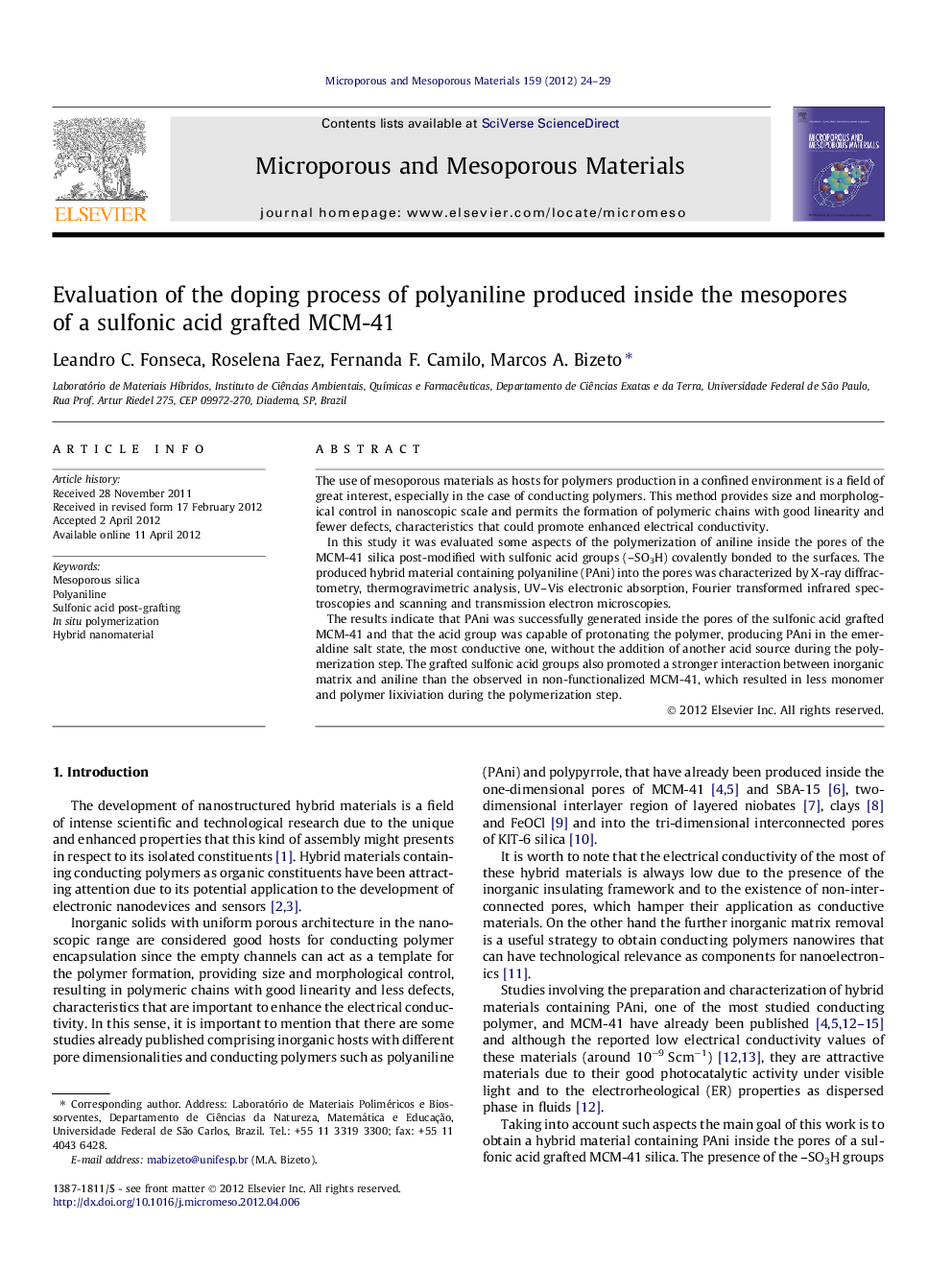| Article ID | Journal | Published Year | Pages | File Type |
|---|---|---|---|---|
| 74155 | Microporous and Mesoporous Materials | 2012 | 6 Pages |
The use of mesoporous materials as hosts for polymers production in a confined environment is a field of great interest, especially in the case of conducting polymers. This method provides size and morphological control in nanoscopic scale and permits the formation of polymeric chains with good linearity and fewer defects, characteristics that could promote enhanced electrical conductivity.In this study it was evaluated some aspects of the polymerization of aniline inside the pores of the MCM-41 silica post-modified with sulfonic acid groups (–SO3H) covalently bonded to the surfaces. The produced hybrid material containing polyaniline (PAni) into the pores was characterized by X-ray diffractometry, thermogravimetric analysis, UV–Vis electronic absorption, Fourier transformed infrared spectroscopies and scanning and transmission electron microscopies.The results indicate that PAni was successfully generated inside the pores of the sulfonic acid grafted MCM-41 and that the acid group was capable of protonating the polymer, producing PAni in the emeraldine salt state, the most conductive one, without the addition of another acid source during the polymerization step. The grafted sulfonic acid groups also promoted a stronger interaction between inorganic matrix and aniline than the observed in non-functionalized MCM-41, which resulted in less monomer and polymer lixiviation during the polymerization step.
Graphical abstractFigure optionsDownload full-size imageDownload as PowerPoint slideHighlights► Aniline polymerization into the pores of a sulfonic acid-grafted MCM-41. ► PAni produced in the emeraldine salt form through a direct auto-doping process. ► Aniline polymerization into MCM-41 template without acid addition. ► Inorganic porous framework acting as template and counter-ion to the doped PAni.
